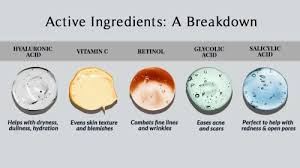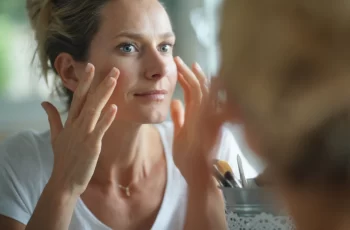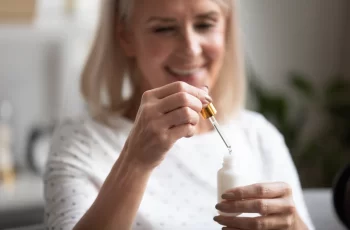
Occlusive Ingredients in Moisturizers and Masks
Occlusive ingredients are found in moisturizers, creams, ointments and masks. Occlusive skin care products have occlusive ingredients that occlude (or block) the skin’s surface. Keep reading for a list of occlusive ingredients in skin care products and to learn how occlusives work.
Are occlusive ingredients right for your Baumann Skin Type? Shop by your Baumann Skin Type to find out.
Occlusives in Skincare
Occlusives are a category of moisturizing ingredients commonly found in skincare products. They mainly come in the form of oily or waxy substances such as vegetable oils (e.g., coconut, olive, and castor oil), as well as ingredients like petrolatum, mineral oil, and beeswax. These substances are typically present in various cosmetic products like lotions, occlusive moisturizers, creams, and lip balms. In skincare, the primary role of occlusives is to create a protective barrier on the skin that helps to lock in moisture and prevent dehydration. Unlike humectants that attract moisture to the skin or emollients that soften the skin, occlusives primarily focus on forming a barrier that seals in existing moisture, thus aiding in maintaining the skin’s hydration levels.
How Occlusives Work
Occlusive ingredients have important functions in skin care products:
Prevent water from evaporating off of the skin
Function as an emollient to coat the skin, fill in ridges, and make the skin feel smooth
Push other ingredients that are put under the occlusive into the skin to increase absorption
Prevent absorption or contact of ingredients and allergens that are placed over the occlusive
Protect skin from allergens, irritants and extreme cold
Occlusives are made of oils, fatty acids, or films and patches such as colloidal membranes. Occlusives in moisturizing creams, ointments, hydrating masks and patches prevent water evaporation off of the skin known as transepidermal water loss (TEWL). They prevent TEWL by putting a protective coating on the skin’s surface.
The pressure of the water that wants to evaporate off the skin but cannot because of the occlusive barrier causes a downward pressure on the skin. This downward pressure pushes in any ingredients on the skin’s surface under the occlusive. The pressure of occlusion:
Increases skin penetration and absorption of the skin care product or medication that is placed under the occlusive.
Decreases skin penetration and absorption of anything such as skin care ingredients, allergens and irritants placed over the occlusive.
Occlusives do not have to be moisturizers or cosmetic products. They are often used to deliver drugs. Occlusives can be oils, ointments, plastic wrap or skin patches. For example, nicotine and estrogen patches are on occlusive patches that push the medication into your skin. Saran wrap occludes the skin and increases the penetration of any medication below it. Oils on the skin are occlusive as well.
Occlusion can also happen when one body part pushes on another. For example, if you have large breasts, the skin under the breasts may occlude the skin at the top of the rib cage. This also happens under the arms and in the groin area. This is why these areas can get rashes and skin allergies to certain products- because the allergens get pushed into the skin by occlusion (the pressure of the skin upon other skin).
Occlusive ingredients, patches, masks or plastic wraps have several functions:
Hydrate the skin by preventing evaporation of water off the skin
Prevent evaporation of any medication or skin care product on the skin
Push ingredients or medications into the skin
Protect the skin from friction
Protect the skin from excessively cold temperatures
Speed wound healing by keeping the wound wet and growth factors on the skin’s surface
Some occlusive agents work better than others. The size and material of the occlusive play a large role in determining its effectiveness of the occlusive. A thick plastic for example would occlude more than a light cream moisturizer. An ointment will occlude more than a lotion or a serum. In skincare, larger molecules tend to occlude better than smaller molecules.
However, skincare products with larger occlusive molecules such as ointments tend to be thick and difficult to spread on your skin. For this reason, occlusives are often formulated in skincare products with other ingredients to help make them more spreadable and convenient to use.
Vaseline and Aquaphor are well known occlusives. There is a new skin care trend in to use Vaseline, Aquaphor and other ointments or oils on top of skincare products to “slug” the skin. Slugging the skin means increasing the penetration of skincare ingredients. Click here to learn more about how to use occlusive ingredients to slug the skin. Jello skin is skin that is full of water due to the use of occlusive skin care ingredients.
Occlusives vs Humectants
Occlusives are a type of moisturizing ingredients commonly found in skincare products. These ingredients, such as oils and waxes like coconut oil and beeswax, create a barrier on the skin that locks in moisture and prevents water loss. Unlike humectants, which draw water into the skin, occlusives do not add moisture but instead focus on retaining the skin’s existing hydration levels by forming a protective seal. Humectants, on the other hand, attract water from the environment or deeper layers of the skin to hydrate the skin. Humectants can increase trans-epidermal water loss if not paired with an occlusive. In terms of product types, lotions typically contain humectants, which are effective in moisturizing the skin, especially when the humidity is above 70%.
Occlusive Ingredients
This list is in alphabetical order. You can click on these occlusive ingredients found in skincare to learn more about how they work. Many have other benefits such as antioxidant or anti-inflammatory benefits.
Argan oil
Beeswax
Borage Oil
Coconut Oil
Emu Oil
Jojoba oil
Lanolin
Mineral oil
Olive oil
Petrolatum
Safflower oil
Tamanu oil
Mineral oil and petrolatum are two of the most effective occlusive ingredients and have been used as effective moisturizers for many decades. Petrolatum and mineral oil are petrochemical byproducts made from crude oil production, so they have a negative impact on the environment.
Environmentally Friendly Occlusives
There are many sustainably grown and harvested sources of occlusive ingredients used in skin care today. If you are concerned about the impact your skin care makes on the globe, consider some of these ingredients.
Argan oil
Avocado oil
Borage seed oil
Coconut oil
Jojoba oil
Marula nut oil
Safflower oil
Sesame seed oil
Shea butter / Shea oil
Sunflower oil
Olive oil*
*Often used as an occlusive on the skin, but it is rich in the fatty acid oleic acid, which can create tiny holes in your skin and therefore damage your skin’s natural barrier. Argan oil is a much better option, as it is high in the fatty acid linoleic acid, which can help to repair the skin barrier and reduce inflammation.
Click here to learn more about fatty acids in skin care.
Here are some of the best oils to use for skin occlusion:
ClarityRx Glimmer of Hope Shimmering Facial Oil
$58.00
Add to Cart
Murad Multi-Vitamin Infusion Oil
$79.00
Out of Stock
Shea Terra MD 100% Pure Moroccan Argan Oil
$24.00
Out of Stock
PAORR By Zerafite Organic Moroccan Argan Oil
$32.50
Add to Cart
ClarityRx Glimmer of Hope Shimmering Facial Oil
$58.00
Add to Cart
Murad Multi-Vitamin Infusion Oil
$79.00
Out of Stock
Shea Terra MD 100% Pure Moroccan Argan Oil
$24.00
Out of Stock
PAORR By Zerafite Organic Moroccan Argan Oil
$32.50
Add to Cart
ClarityRx Glimmer of Hope Shimmering Facial Oil
$58.00
Add to Cart
Murad Multi-Vitamin Infusion Oil
$79.00
Out of Stock
Shea Terra MD 100% Pure Moroccan Argan Oil
$24.00
Out of Stock
PAORR By Zerafite Organic Moroccan Argan Oil
$32.50
Add to Cart
Which Occlusive Ingredients Are Best For Your Skin Type?
The best occlusive ingredients for you depend upon what barriers to skin health you have. To find exactly which occlusive moisturizers, oils, and masks are best for you, shop by your Baumann Skin Type.
In general, occlusive ingredients are best suited to dry skin types that have a hard time retaining water. Occlusives are wonderful at preventing water from evaporating from the skin.
Sensitive skin types often benefit from occlusive ingredients or products because they often, but don’t always, contain anti-inflammatory properties.
Oily skin types might want to avoid some occlusive ingredients with comedogenic properties, like coconut oil, because their skin is prone to acne.
Take the Quiz
Negative Effects of Occlusives
The potential negative effects of using occlusives in skincare include the risk of developing follicular occlusion syndrome. in this syndrome, occlusives block hair follicles leading to painful bumps, acne, and folliculitis. While occlusives can help prevent contact dermatitis by coating the skin and preventing contact with allergens, they may also increase the severity of contact dermatitis and skin irritation if they are used over irritants or allergens. Some occlusives are comedogenic and clog pores.
Occlusives in Your Skincare Routine
Occlusives should be incorporated into your skincare routine by applying them as the last step in your night skincare routine. They will seal in moisture and any serums or creams applied before them. In fact, they help anything applied before them absorb better. (This is called slugging.) Apply following the direction of hair growth to prevent follicular occlusion syndrome. Avoiding vigorous rubbing. Most occlusive products may feel greasy, such as Vaseline, so it’s advisable to use them an hour or more before bedtime to avoid transferring them onto your pillow.


